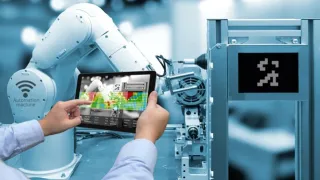The pulse rate in life is increasing both in industry and in our everyday life. We are using more and more real time measurement data for observing and predicting various phenomena, e.g. weather, traffic and control of a paper manufacturing process. Yet, constantly moving objects are much more difficult to measure than others standing still, right? Is it even possible to perform dynamic measurements in a reliable way?
I have so many times taken a picture that has turned out to be fuzzy because the intended target had moved. Once in a graduation event I even managed to take a picture without the actual target because she was faster in walking than me in photographing. When taking photos of a moving object, the exposure time is crucial for the sharpness. Too long exposure time results in pictures that may only have artistic value. Respectively, when measuring any non-static phenomenon our measurement device must be fast enough with respect to the speed of the change in the target: slower measurement leads to poorer accuracy in measurement results.
Constantly increasing speed and capacity of data transfer, storage and analysis enable measurements of faster phenomenon. This is highly relevant for e.g. minimizing emissions from heavy duty vehicles and generators as well as operating smart energy grids. In many cases, however, the accuracy is limited by capability of a measurement device to detect fast changes in a reliable way. The response of the device to changes is often not fast enough or errors are induced by simultaneous changes in thermal and mechanical stresses. In the case of a heavy duty diesel engine, a pressure sensor should measure over 1000 pressure pulses per second. In electric grids, voltage changes may be million times faster. In mechanical measurements – such as pressure and force – changes in mechanical stresses and transfer of heat affect the measurement results but these changes are typically slower than changes in the measurand. As a result, the accuracy of the measurement device may vary with the speed of change.
When considering the reliability of a dynamic measurement we need to take into account the characteristic speed of the measurement device with respect to the measured phenomenon. Like when taking photos, we need to have short enough exposure time. To verify this, we need to be able to calibrate the device under similar conditions. So, if a device is used for measuring an object vibrating 1 kHz, i.e. 1000 times per second, also the calibration measurements for this device needs to be carried out under the same vibration condition. This is needed for determining the reliability of the measurement. Regular recalibrations ensure the reliability of the device during its lifetime. To enable appropriate calibrations in the field of dynamic measurements, several projects of the European metrology research programme (https://www.euramet.org/metrology-for-societys-challenges) have produced research results and developed several new calibration methods for several measurement quantities.
We can conclude that dynamic measurements can be reliable and the reliability can be determined and proven. However, we need to use measurement and calibration methods that comply with the specific requirements set by the dynamic nature of the measurements.





